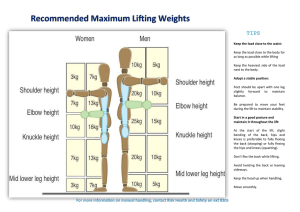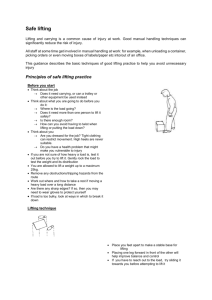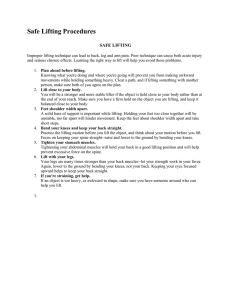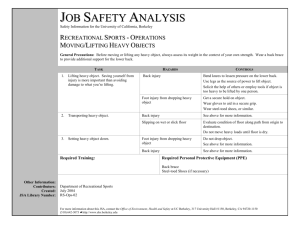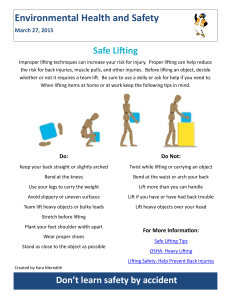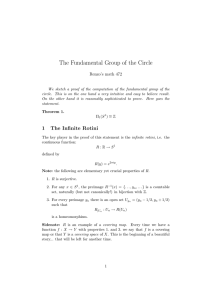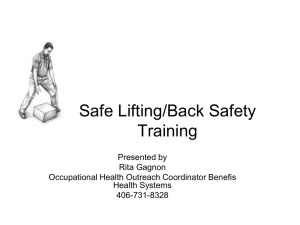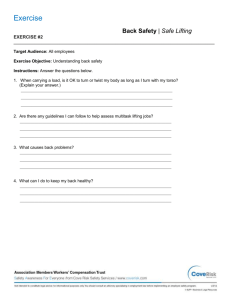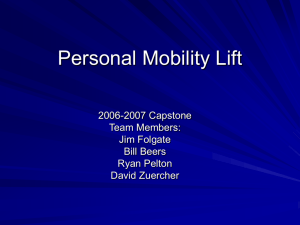Lifting Heavy Objects
advertisement
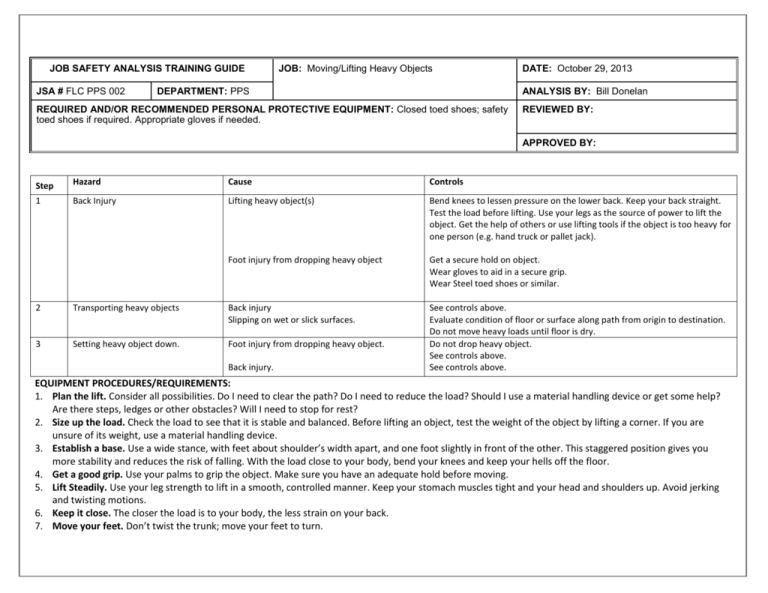
JOB SAFETY ANALYSIS TRAINING GUIDE JSA # FLC PPS 002 JOB: Moving/Lifting Heavy Objects DEPARTMENT: PPS DATE: October 29, 2013 ANALYSIS BY: Bill Donelan REQUIRED AND/OR RECOMMENDED PERSONAL PROTECTIVE EQUIPMENT: Closed toed shoes; safety toed shoes if required. Appropriate gloves if needed. REVIEWED BY: APPROVED BY: Step Hazard Cause Controls 1 Back Injury Lifting heavy object(s) Bend knees to lessen pressure on the lower back. Keep your back straight. Test the load before lifting. Use your legs as the source of power to lift the object. Get the help of others or use lifting tools if the object is too heavy for one person (e.g. hand truck or pallet jack). Foot injury from dropping heavy object Get a secure hold on object. Wear gloves to aid in a secure grip. Wear Steel toed shoes or similar. See controls above. Evaluate condition of floor or surface along path from origin to destination. Do not move heavy loads until floor is dry. Do not drop heavy object. See controls above. See controls above. 2 Transporting heavy objects Back injury Slipping on wet or slick surfaces. 3 Setting heavy object down. Foot injury from dropping heavy object. Back injury. EQUIPMENT PROCEDURES/REQUIREMENTS: 1. Plan the lift. Consider all possibilities. Do I need to clear the path? Do I need to reduce the load? Should I use a material handling device or get some help? Are there steps, ledges or other obstacles? Will I need to stop for rest? 2. Size up the load. Check the load to see that it is stable and balanced. Before lifting an object, test the weight of the object by lifting a corner. If you are unsure of its weight, use a material handling device. 3. Establish a base. Use a wide stance, with feet about shoulder’s width apart, and one foot slightly in front of the other. This staggered position gives you more stability and reduces the risk of falling. With the load close to your body, bend your knees and keep your hells off the floor. 4. Get a good grip. Use your palms to grip the object. Make sure you have an adequate hold before moving. 5. Lift Steadily. Use your leg strength to lift in a smooth, controlled manner. Keep your stomach muscles tight and your head and shoulders up. Avoid jerking and twisting motions. 6. Keep it close. The closer the load is to your body, the less strain on your back. 7. Move your feet. Don’t twist the trunk; move your feet to turn.
